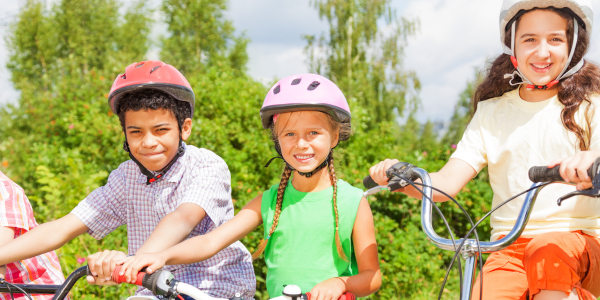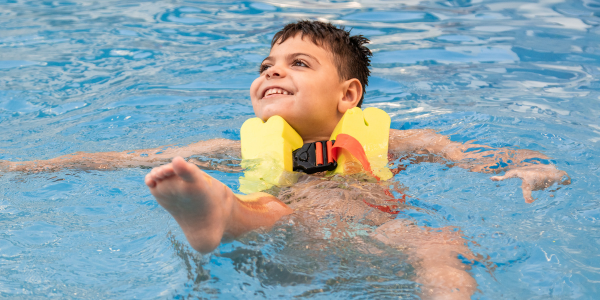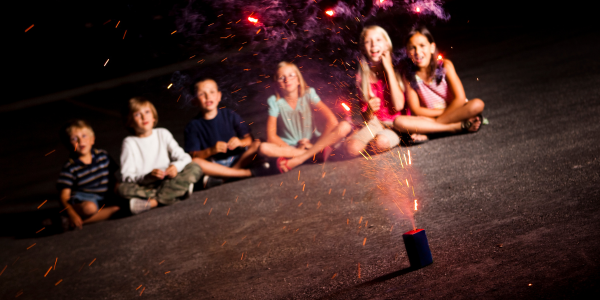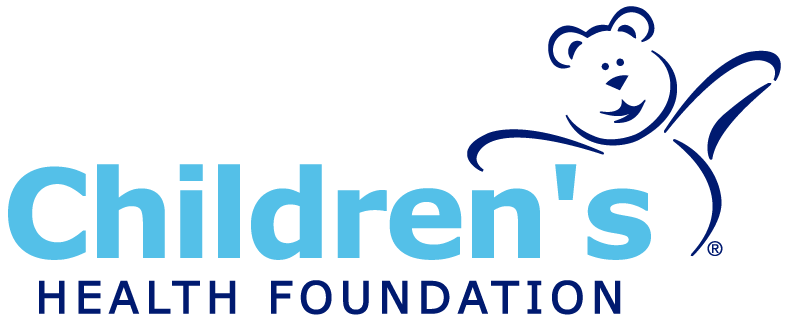A message from Children's Hospital's Injury Prevention Team
Tip #1: Helmets On to Protect Young Brains

With the nice weather approaching, make sure to protect your head when riding a bicycle, skateboard, scooter, or any set of your favourite wheels. For helmets to provide protection, they must be correctly fitted and secured.
A properly fitted helmet protects your brain by absorbing the force from a crash or fall and will dramatically decrease the risk of serious head or brain injury. Ensure proper fit by using the 2V1 method: two fingers distance from helmet to eyebrow, V-shaped straps around both ears, and one finger between the chin and chin strap. Make sure the helmet you’re using is certified for the activity or sport and replace the helmet according to the manufacturer’s guidelines.
Tip #2: Stay Near and Secure by Water

Whether you’re at the pool, beach or on the lake, swimming is a great way to cool down on a hot day.
Drowning is one of the leading causes of unintentional injury deaths for children 10 and under. Children should always be closely supervised by an adult and within arm’s reach around water. Start your kids in swimming lessons early to gain the confidence and skills necessary to reduce the risk of drowning.
Lifejackets are one of the most effective ways to reduce drowning for young children and those who can’t swim. Make sure your child’s lifejacket has the appropriate features and is approved by Transport Canada, Canadian Coastguard, or Fisheries and Oceans Canada.
Finally, it’s your responsibility to make sure your backyard pool meets local bylaws and regulations when it comes to fences, fence height, self-closing and self-latching gates.
Tip #3: Road Trip with the Right Seat

Children are well protected and less likely to be severely injured when the right car seat, booster seat or seat belt is used properly on every ride. As well, it’s important not to rush your child through the car seat stages.
Car seats must be installed with the universal anchorage system (UAS) or the seat belt. The car seat must be secured with the seat belt if your child is over 40 lbs.
For rear-facing car seats, make sure the recline is appropriate as shown by the indicator on the base or seat. For forward-facing car seats, the top tether strap must be used. Harness straps should be level with or slightly below the child’s shoulders for rear-facing seats and level with or slightly above the child’s shoulders for forward-facing seats. Lastly, the car seat should not move more than one inch in any direction at the belt path.
Tip #4: Have a Sunscreen Routine

One of the best parts of summer is the sunshine and warm weather! Even on cloudy days, sun burns can happen quickly so make applying sunscreen with an SPF of 30 or greater part of your daily routine. Make sure to reapply sunscreen hourly when out in the sun and whenever you or your little one get out of the water.
To prevent heat-related illness, keep the family cool by wearing wide-brimmed hats, as well as clothing that is lightweight and loose-fitting. In extreme heat, stay indoors in the cool temperatures and limit outdoor activities to times of the day that are the coolest, like the mornings or evenings.
Hydrate! Hydrate! Hydrate! Ensure you and your child drink plenty of fluids and never wait until you’re thirsty to drink. It’s important to know the signs and symptoms of heat-related illness as severe cases may require medical attention.
Tip #5: Fireworks are most Beautiful when Lit Safely

There’s plenty to celebrate from early spring to late summer and fireworks are often used as the showstopping finale of the night. If not properly handled, fireworks can easily cause severe burns and injuries to hands, fingers, and other parts of the body.
Consider attending a public firework display that is professionally managed, but if you choose to light fireworks on private property, ensure you do so in an open area that is far from buildings and combustible material.
Keep children away from fireworks and consider using alternatives such as glowsticks instead of sparklers. It is important to teach your children proper firework safety including never to point fireworks at another person, keep a safe perimeter, never hold, or cover a lit firework, and keep a bucket of water or hose available for emergencies and disposal.
Learn more about the Children’s Hospital Regional Injury Prevention Program right here!


